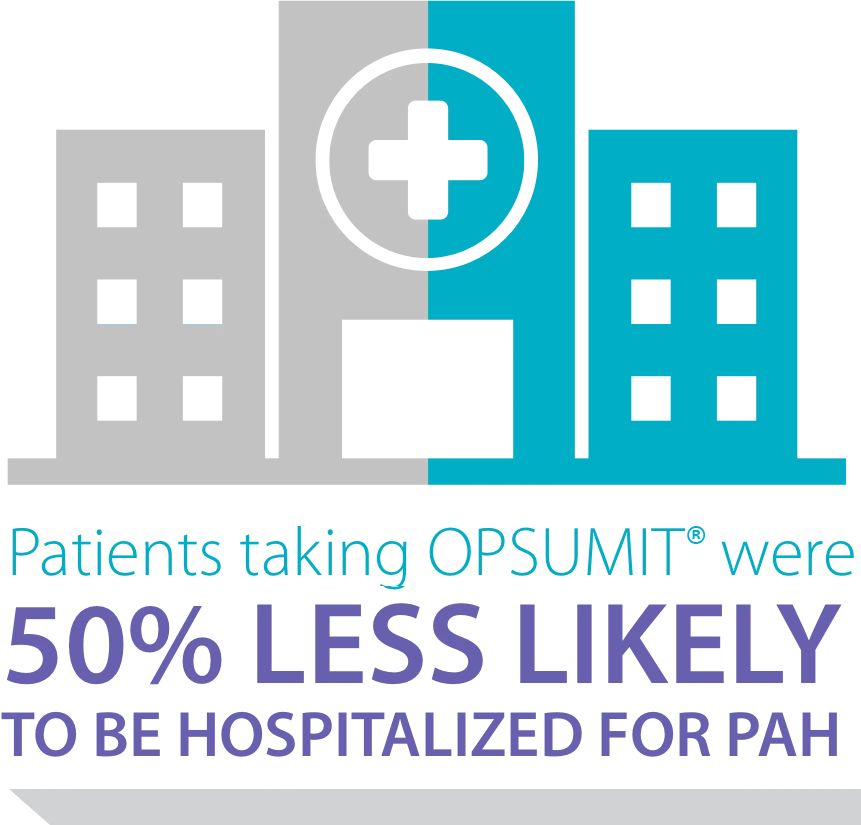Benefits of OPSUMIT®
OPSUMIT® was studied in the largest long-term clinical trial of any ERA in PAH:
- Compared 242 patients taking OPSUMIT® with 250 patients taking a placebo (sugar pill)
- Included patients from 39 countries who were treated with OPSUMIT® for an average of 2 years
- Included a majority of patients who were already being treated with a specific therapy for PAH, either PDE5 inhibitors (61%) and/or inhaled/oral prostanoids (6%)

OPSUMIT® lessens the chance that PAH will progress
In a clinical trial, patients taking OPSUMIT® (31.4%) were 45% less likely to have their PAH progress than patients taking a placebo (sugar pill) (46.4%). This means more time without a serious PAH event.

Disease progression included the need for injectable PAH medication or other worsening of PAH (decreased 6MWD, PAH symptoms getting worse, and the need for new PAH treatment). Disease progression can also include less frequent instances of death, or the need for atrial septostomy (a procedure where a hole is placed between the two small chambers of the heart) or lung transplant.
OPSUMIT® lowered the chance of being hospitalized due to PAH

OPSUMIT® helped patients walk farther
The 6-minute walk test (6MWT) measures the distance you can walk in 6 minutes. It is one test that your doctor may perform to assess your condition.

OPSUMIT® improved patients' functional class
Improved functional class means you can do more physical activity with fewer limitations. It does not always mean symptom improvement.
More patients taking OPSUMIT® saw an improvement in functional class (measured by improvement of at least one functional class), which can mean less chest pain, less fatigue, and less shortness of breath.
Improvement in functional class from baseline to Month 6: 22% of patients receiving 10 mg OPSUMIT® (n=242) (vs 13% with placebo [sugar pill] [n=249])
Functional class is a common way for doctors to assess the seriousness of your PAH, which can help them with making treatment decisions. The higher the functional class, the more severe the disease. According to PAH experts, maintaining or improving functional class is often an important goal of PAH treatment. Improved functional class means you can do more physical activity with fewer limitations. It does not always mean symptom improvement.
The most common side effects occurring more frequently (≥3%) for patients taking OPSUMIT® vs patients taking placebo (sugar pill) were low red blood cell levels (anemia), stuffy nose or sore throat, irritation of the airways (bronchitis), headache, flu, and urinary tract infection.


